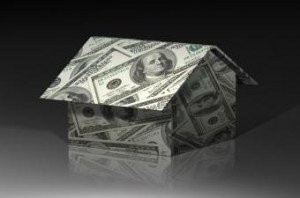 Cash and distressed sales hit a nine-year low in the third quarter, just as sellers realized nine-year highs, according to the ATTOM Data Solutions Q3 2016 U.S. Home Sales Report.
Cash and distressed sales hit a nine-year low in the third quarter, just as sellers realized nine-year highs, according to the ATTOM Data Solutions Q3 2016 U.S. Home Sales Report.
ATTOM found that REOs, foreclosures, and short sales accounted for 13 percent of all U.S. single family home and condo sales in Q3. That’s down from 15 percent in Q2 and 16 percent a year ago. It’s also the lowest share of distressed home sales since 2007, when distressed sales accounted for 12.3 percent of all home sales. Distressed sales peaked at 44 percent in 2009.
The highest shares of distressed sales happened in Toledo, where 36.4 percent of Q3 sales were distressed properties. Anchorage, at just over 3 percent, saw the lowest share.
The report also showed that all-cash purchases accounted for 26 percent of all single family home and condo sales in Q3. That’s down from 27.4 percent in Q2 from 29 percent a year ago. Like distressed sales, cash sales are at their lowest point since 2007, when all-cash deals made 24.3 percent of all home sales. Cash deals hit their peak in 2011, when the reached
“Distressed inventory for sale is virtually non-existent in many of the nation’s hottest housing markets, and when a distressed property is listed for sale in those markets it often sells quickly and at little or no discount,” said Daren Blomquist, senior vice president at ATTOM Data Solutions. “The scarcity of discounted distressed inventory is chasing away cash buyers and other bargain hunters, but it’s certainly good news for home sellers, who nationwide realized the biggest home price gains since purchase in nine years.”
Nationally, Q3 sellers saw their biggest gains in sale prices since 2007. According to the report, homeowners sold for an average $43,000 above their purchase price in the quarter, a 23 percent gain and the highest since Q3 2007.
Sellers in San Jose and San Francisco saw the biggest gains, at 68 and 67 percent, respectively. They also saw the average home price gain since purchase decline after peaking in the previous quarter, and Seattle saw hefty improvements too.
“Seattle clearly stands out as a housing market that continues to outperform the vast majority of markets in the U.S. relative to price appreciation,” said Matthew Gardner, chief economist at Windermere Real Estate, covering the Seattle market. “This can be attributed to its booming economy and inventory limitations, which are largely a result of the region’s topographic and governmental constraints regarding land. However, despite this supply of new inventory, Seattle area home prices are still expected to outperform the rest of the U.S. in 2017.”

 DSNews The homepage of the servicing industry
DSNews The homepage of the servicing industry









